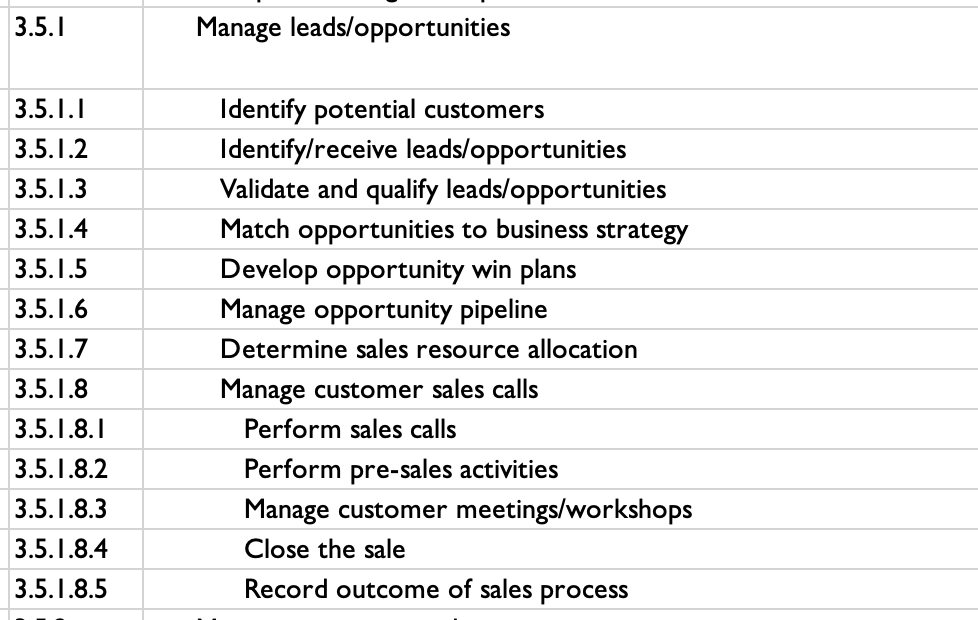Business Process Geekery with APQC
Down the rabbit hole we go...
Hello, and welcome to the latest episode of “Simon takes an incredibly dry subject and tries to squeeze an interesting article out of it”.
I work with teams that define solutions for clients across a range of industries. Our clients span retail, manufacturing, travel and transport, and business service providers. It’s a diverse group of companies with different markets, different business models and different characteristics.
It feels like it can be hard to understand these businesses and to know how they operate.
Each of our clients ARE different. But if you start to decompose them and inspect the components, you can see that all businesses are alike, regardless of industry.
I happen to love maps. Mapping visualises where we are in relation to where we want to be, and how to get there.
There is one map that I return to often that I wanted to summarise here, as I find it helpful in navigating client accounts and understand how they work.
The map below visualises the APQC PCF (American Process and Quality Center Process Classification Framework). Now did I not warn you this is a dry subject??
The PCF provides an exhaustive list of the individual building blocks composed into a large complicated business. It represents a map of “what businesses do” and can form the basis for the following questions:
How does this company perform this particular business process?
Which capabilities of a business are outsourced to a provider, rather than built in-house?
Who is responsible for the success of this business process? (Is there a friend I haven’t met yet!)
How does technology support this business process?
How digitally mature is this business process?
Is there an opportunity for Digital Transformation in this part of the business?
The map only shows the top layer of the process definition.
The map is a visualisation of the PCF excel file which contains an overwhelming amount of information. I prefer the graphic because you can see the whole scope of what a business does on one page.
Within the map, only the top two levels of the hierarchy are shown.
Level 1 - Category: “Manage Enterprise Risk, Compliance, Remediation and Resiliency”
Level 2 - Process Group: “Manage Enterprise Risk”
The PCF defines five levels in the Business Process hierarchy down to the task level.
Here is a view of the Excel spreadsheet that drills down to the activity. I work in pre-sales which is a part of the business labelled 3.5.1.8.2
Category 3: Market and Sell Products and Services
Process Group 5: Develop and Manage Sales Plans
Process 1: Manage leads/opportunities
Activity: 8: Manage customer sales calls
Task 2: Perform pre-sales activities
My entire career summarised neatly into a numerical designation!
Can you find your job in the depths of the Process Classification Framework? :)
Operating processes versus Management and Supporting Services
All work within companies falls into two broad categories. Work that generates revenue for the business (Operating processes) or work that keeps the business running efficiently (Management and supporting services).
Process categories 1 to 6 define a left-to-right value chain, from vision to supporting customers
1.0: Develop Vision and Strategy
2.0: Develop and Manage Products and Services
3.0: Market and Sell Products and Services
4.0: Deliver Physical Products
5.0: Deliver Services
6.0: Manage Customer Service
Process categories 7 to 12 define the capabilities that any organisation needs to deliver the value chain to its customers
7.0: Develop and Manage Human Capital
8.0: Manage Information Technology
9.0: Manage Financial Resources
10.0: Acquire, Construct and Manage Assets
11.0: Manage Enterprise Risk, Compliance, Remediation and Resiliency
12.0: Manage External Relationships
13.0: Develop and Manage Business Capabilities
Across any industry business processes in the Management and Supporting Services has many commonalities. Retailers manage people and IT in much the same way a manufacturing company does.
It’s the domain of Best Practice and Standardisation as most companies do it in the same way. And as it is easily understood and replicated across companies in various industries, it’s often outsourced to reduce cost.
If you need to understand a clients business, these are the areas where you can make assumptions based on other companies in the same industry.
The Operating Processes (Categories 1-6) are the unique combination of capabilities that define how the business competes in the market. These capabilities are a competitive advantage that helps the business win.
Two competing companies will have adopted strategies that result in different operating processes—defining the company's vision and strategy to achieve goals. The marketing and sales processes that are relevant to the market the company is targeting.
You can find a lot of diversity in how the Operating Processes work and you should make fewer assumptions about how this area of the business looks.
Summary
I keep the map close to hand when I’m trying to understand companies and how they work. It's a visual guide to people, process and tools that together define a business.
The APQC PCF is a very detailed body of work and freely available to download. Grab a copy; it might come in handy when you need a shared language and reference for talking about your own business.
Read more:



